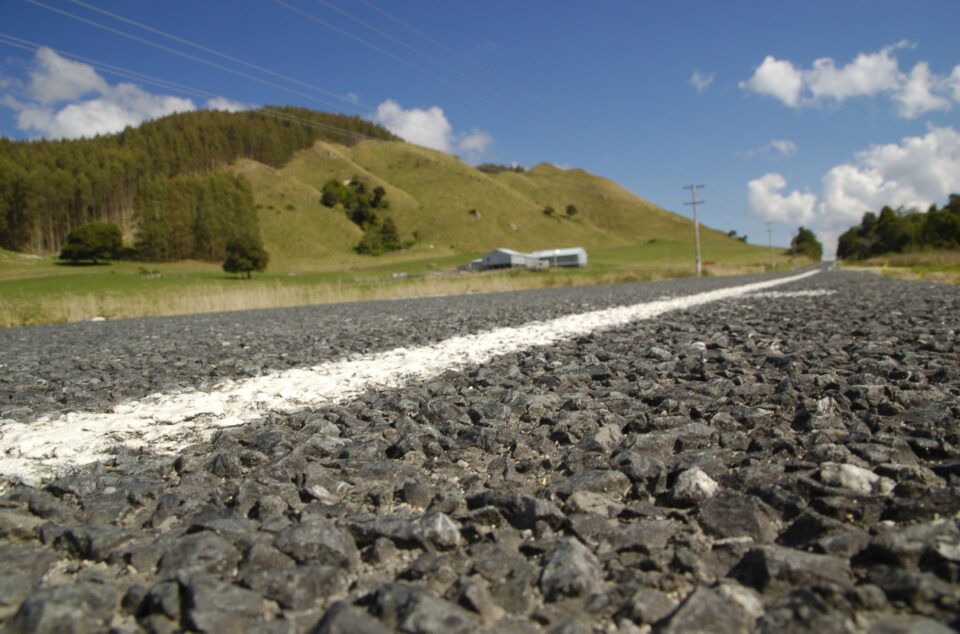By Brett Gliddon, Group General Manager, Transport Services, Waka Kotahi, NZ Transport Agency.
Five weeks after Cyclone Gabrielle left many of our North Island communities devastated, we’re still facing challenges to reopen some of our critical networks. The size and scale of damage is beyond anything I’ve ever seen, yet I’ve been impressed by the efforts of many contractors and people across the supply chain to get the majority of our state highways and local roads reopened and communities reconnected.
But they’re not the same as they once were.
Ahead of us is a long road to recovery. Hillsides are scarred, there are multiple over and under-slips often on the same stretch of highway such as the Brynderwyns that are fragile, and other places like Devil’s Elbow on SH2 are unrecognisable. Even as roads reopen, we’ll be looking at interim solutions for some time.
Very soon we’ll move from the emergency response to phase two of the recovery. It’s here that we look at the already opened roads and restore them to a more acceptable level of service. It’s also here that we assess the network to inform what phase three, the long-term rebuild with future resilience will look like.
We know there will other weather events, and while we prepare for these, our transport infrastructure is more vulnerable now than ever with already wet ground leaving little room to soak up more rain. So what we do in phase three, to achieve a long-term permanent and resilient recovery is really important.
We’re still developing our recovery plan and determining the scope. However, we know that some transport networks will likely stay in phase two for a while, others might move to phase three more quickly, while those corridors still closed might take longer to move out of phase one. What is clear for phase three is the need to rebuild smarter, safer and with added resilience.
This demands a different approach.
An industry-wide response is required. Local skilled people and businesses will be needed to work alongside our national contractors and suppliers, and there’s an opportunity to drive improvements in sector skills and capability and work closer with local communities.
There needs to be strong collaboration and connections across local and central government, infrastructure owners, contractors and suppliers. While Waka Kotahi is responsible for state highways, the entire transport system from state highways, to local roads and other assets such as railway, must be considered together, which cannot be achieved in silo.
We need to challenge how we design and construct, so we focus on the future, we move at pace and increase our productivity, and we do it well. To do that and to build back smarter, safer and with added resilience, we need to think in new ways and work together.
We’ve started looking at how we challenge our current design philosophy and what is needed to take a different approach that includes standardising designs and assets to bring about efficiencies, and how we use better information in our designs that recognise the changing climate. Transport infrastructure could benefit from modular designs, so examples like retaining walls or bridges come in a few standard options, effectively removing the complexities of bespoke design at each site. We’re also interested in innovative thinking, low environmental impact, waste minimalisation, and the materials used.
It’s important multi-disciplinary experts from across the broader sector contribute to this work, with engagement likely over the coming months. We’re also reaching out to our overseas colleagues to learn about their recent flood recovery work, and to our experts in resilience at Waka Kotahi.
More innovative procurement practices will be needed. We’re currently developing a procurement strategy that includes consideration for an inclusive industry-wide approach to develop healthy markets across the sector.
We’re also working on a strategic view of our state highway networks in the impacted regions, but in a system context, to inform rebuild decisions. Our work on this includes using existing information to get a broad view of how people use the transport network and what they need from it, and what is needed for resilience, safety and efficient freight movement. We’ll also apply a stronger resilience lens to confirm the level of performance needed for our transport networks.
What will become clearer is a pipeline of work for contractors and the sector. The Government has signalled its commitment to rebuild our impacted regions and to rebuild smarter. Over time as funding and our design work for resilient transport infrastructure becomes clearer, we know we will have a strong pipeline of work over the next four to five years.
A transport infrastructure recovery of this scale has not been seen before. We cannot underestimate the task ahead for our sector. It is massive and widespread across many regions, and we’re likely to be challenged by sector and supply chain capacity that we’ll need to work through.
Yet, there are many opportunities ahead if we work together, and I have full confidence that if we utilise the entire industry in the response, we will be able to rebuild faster and more resilient, at the same time as bringing new people into the industry and growing skills and capability. It is exciting.


Parting words from Jeremy Sole- a final column